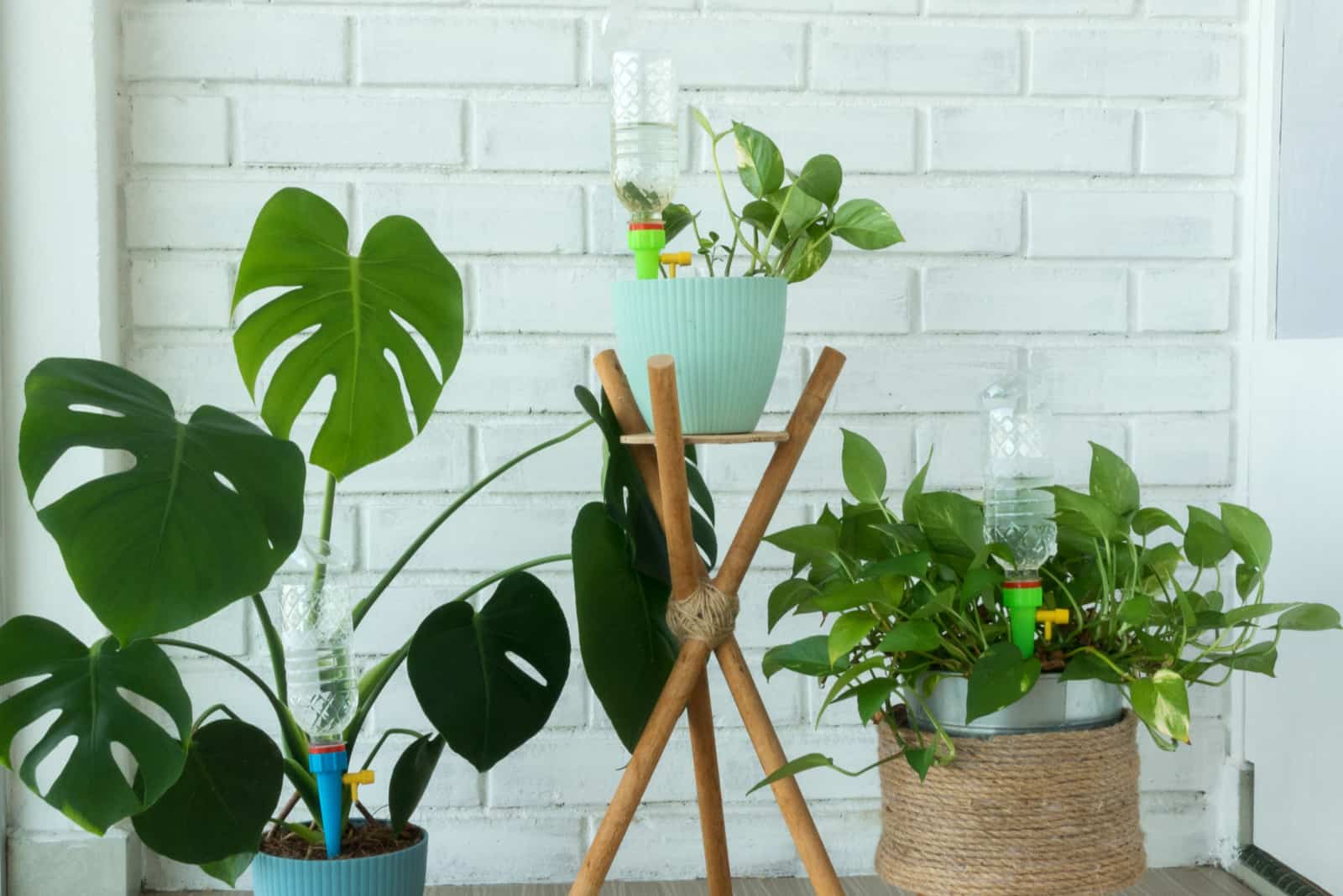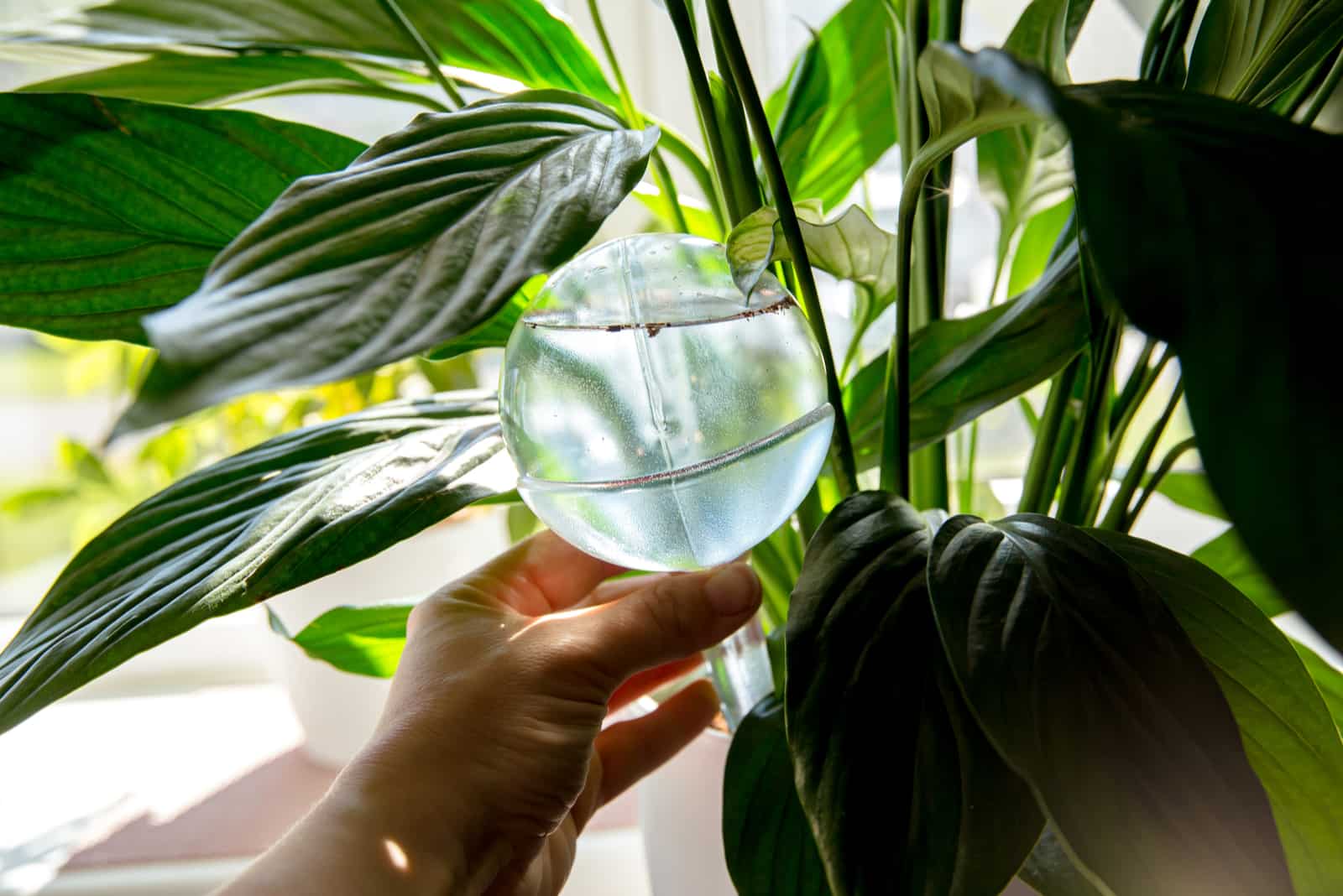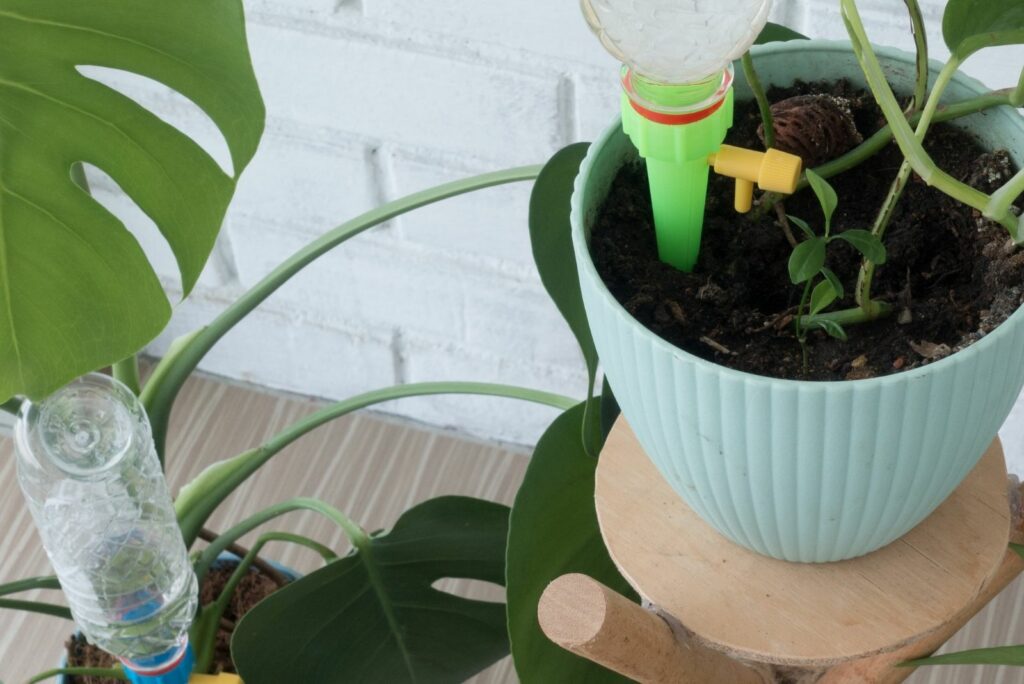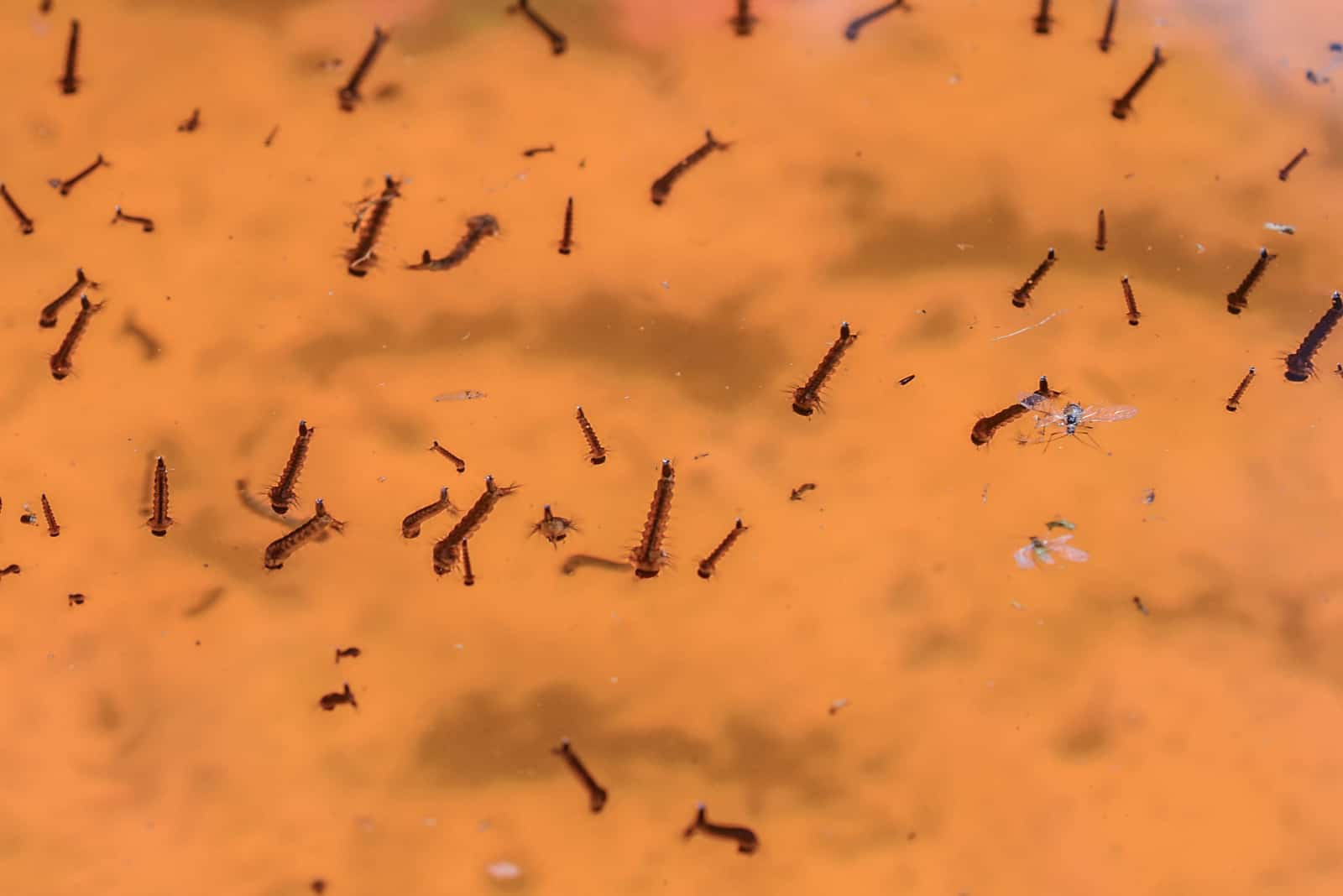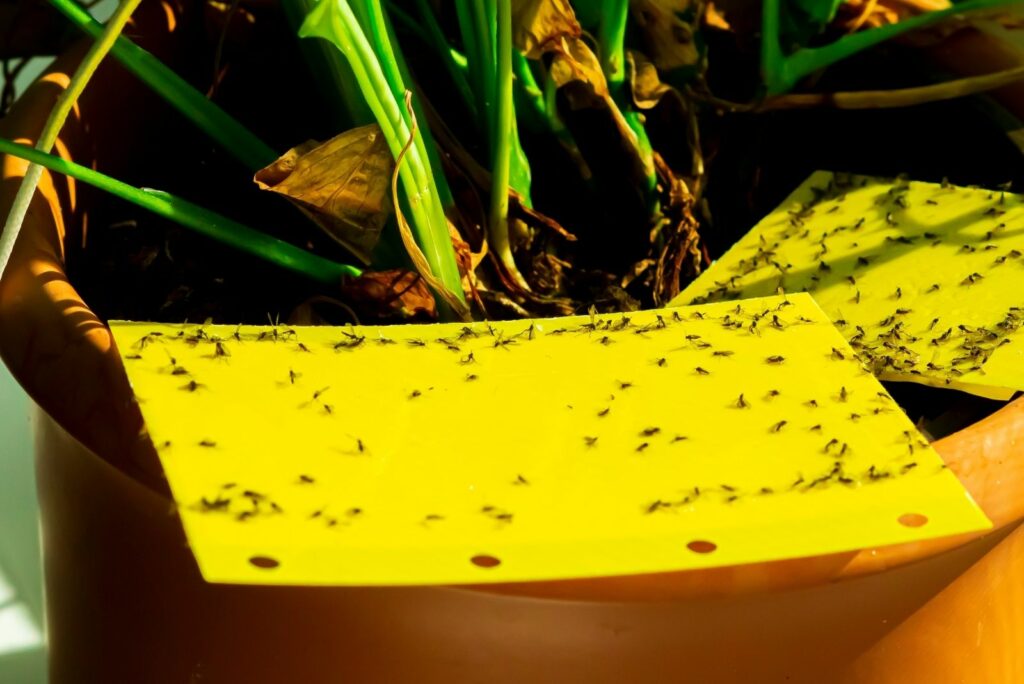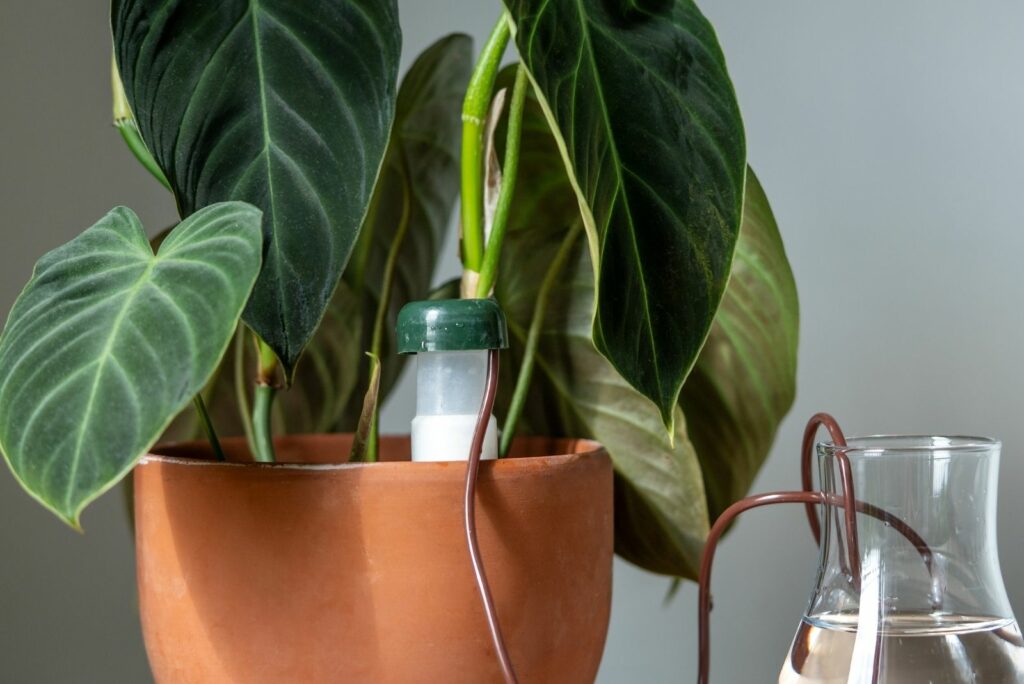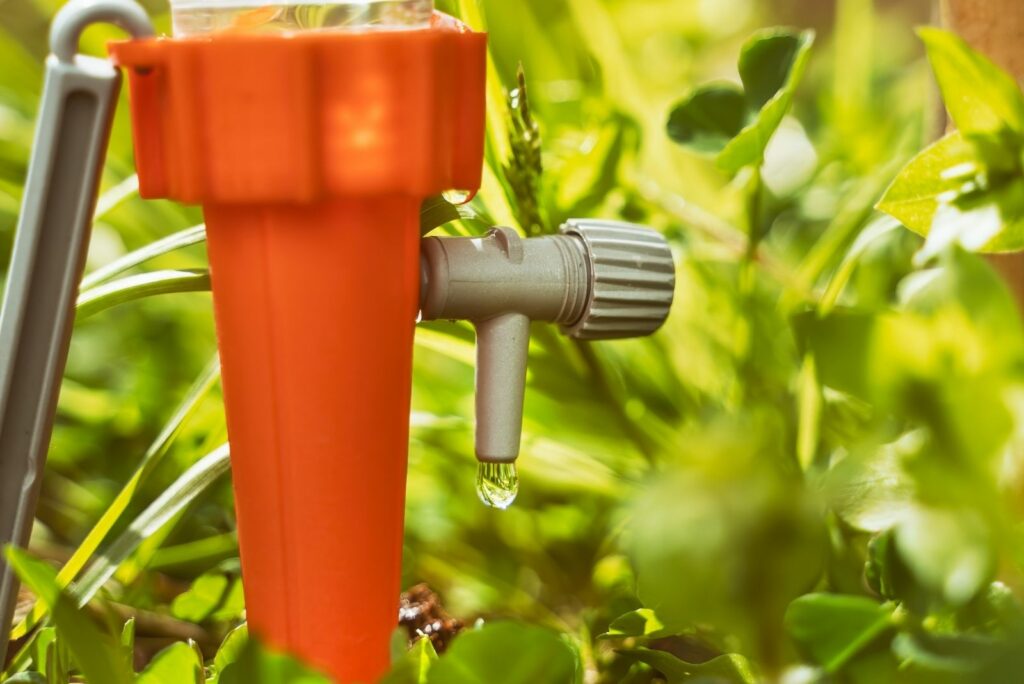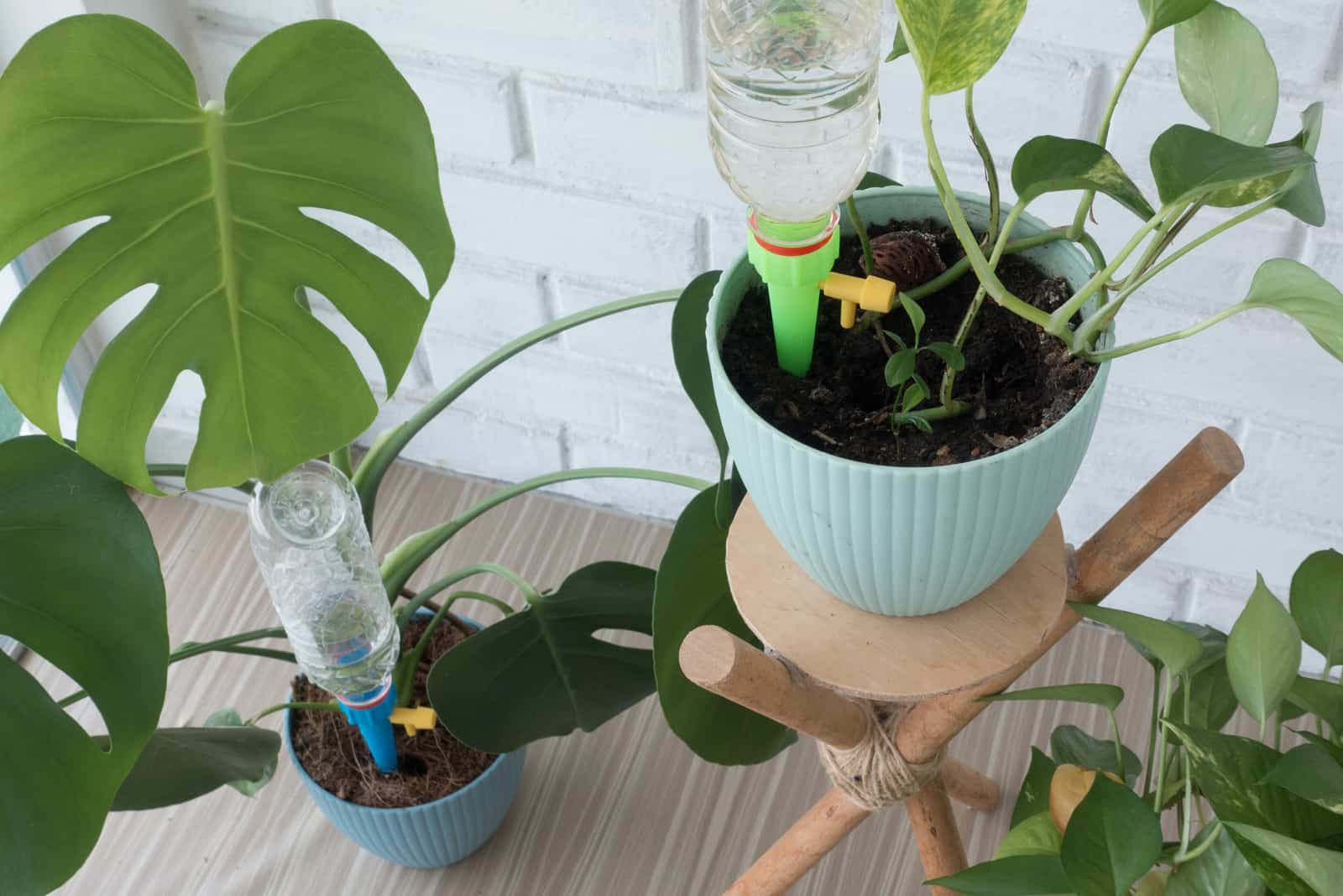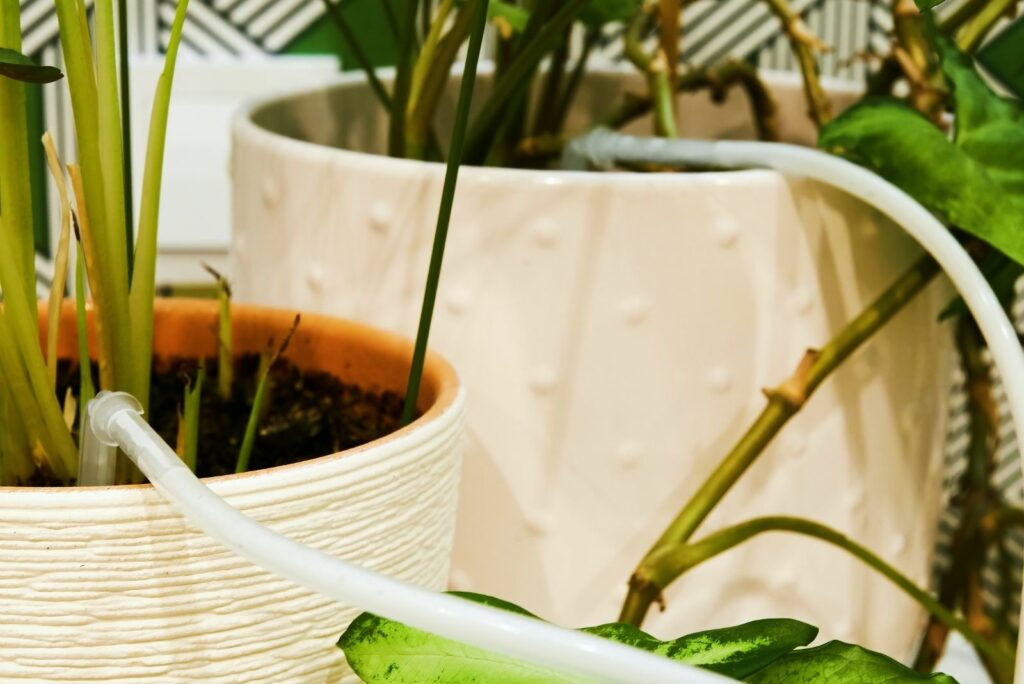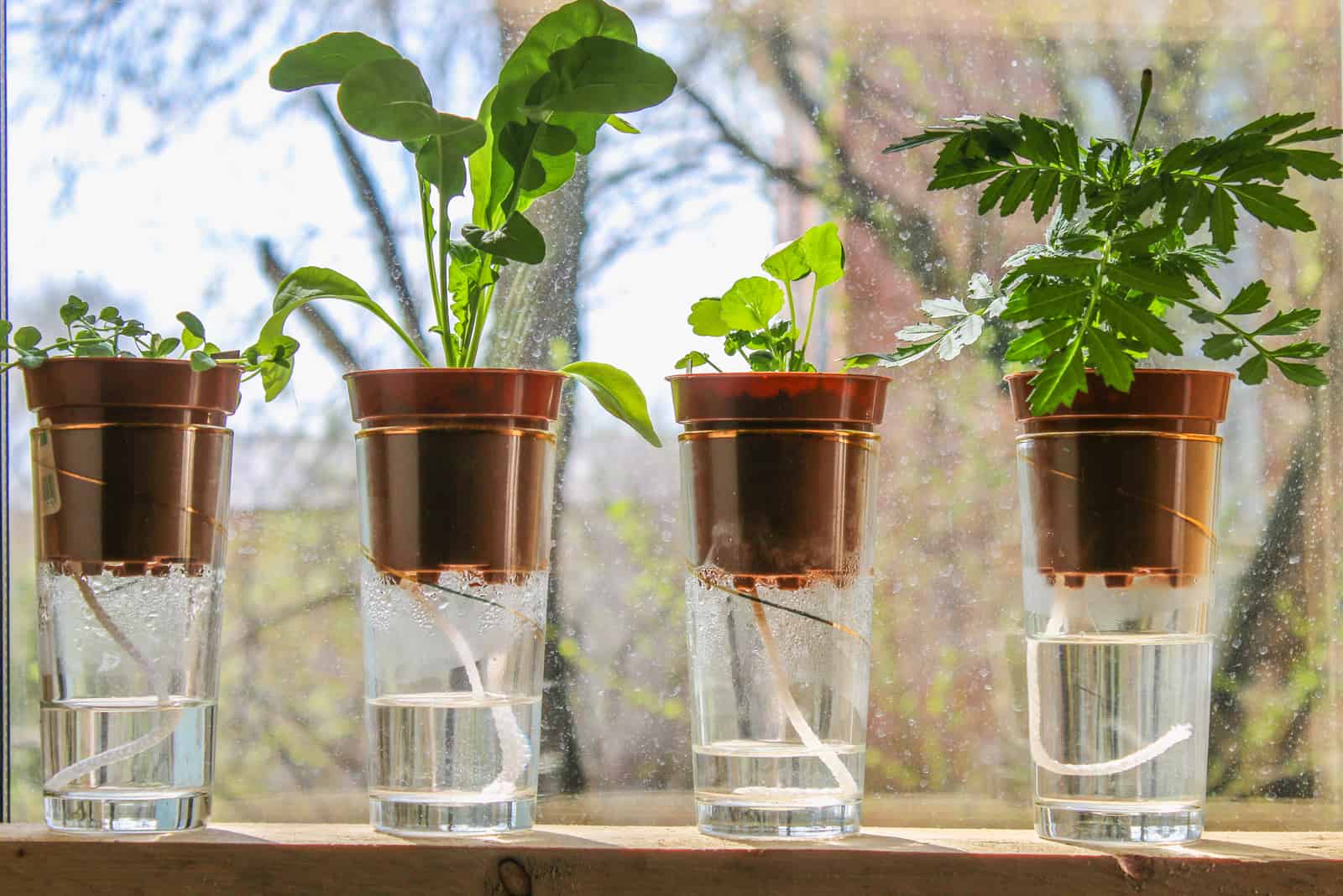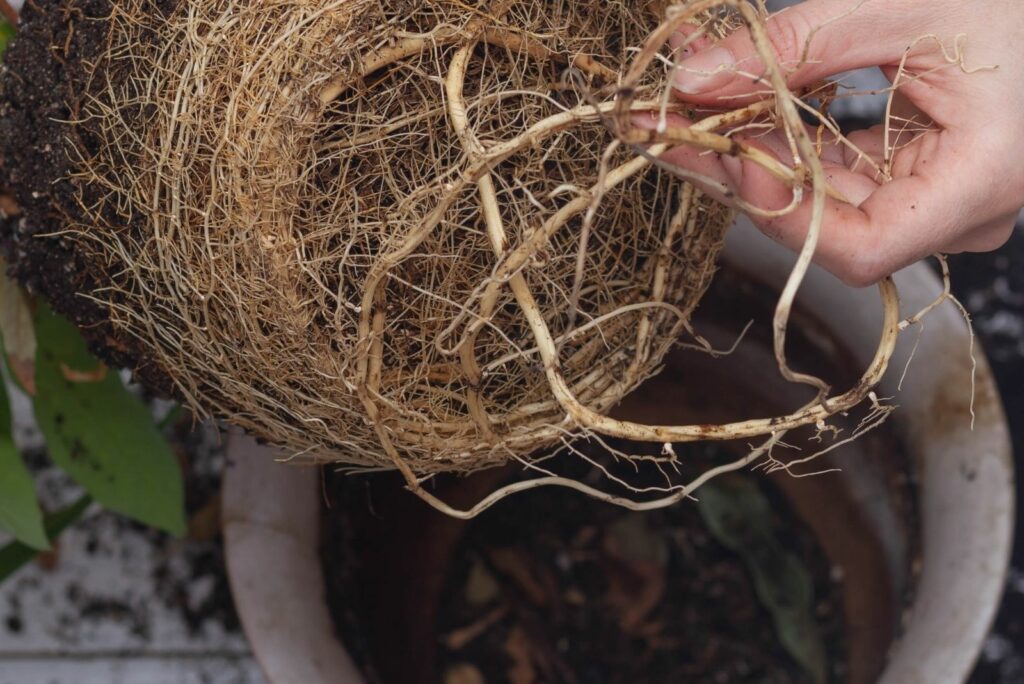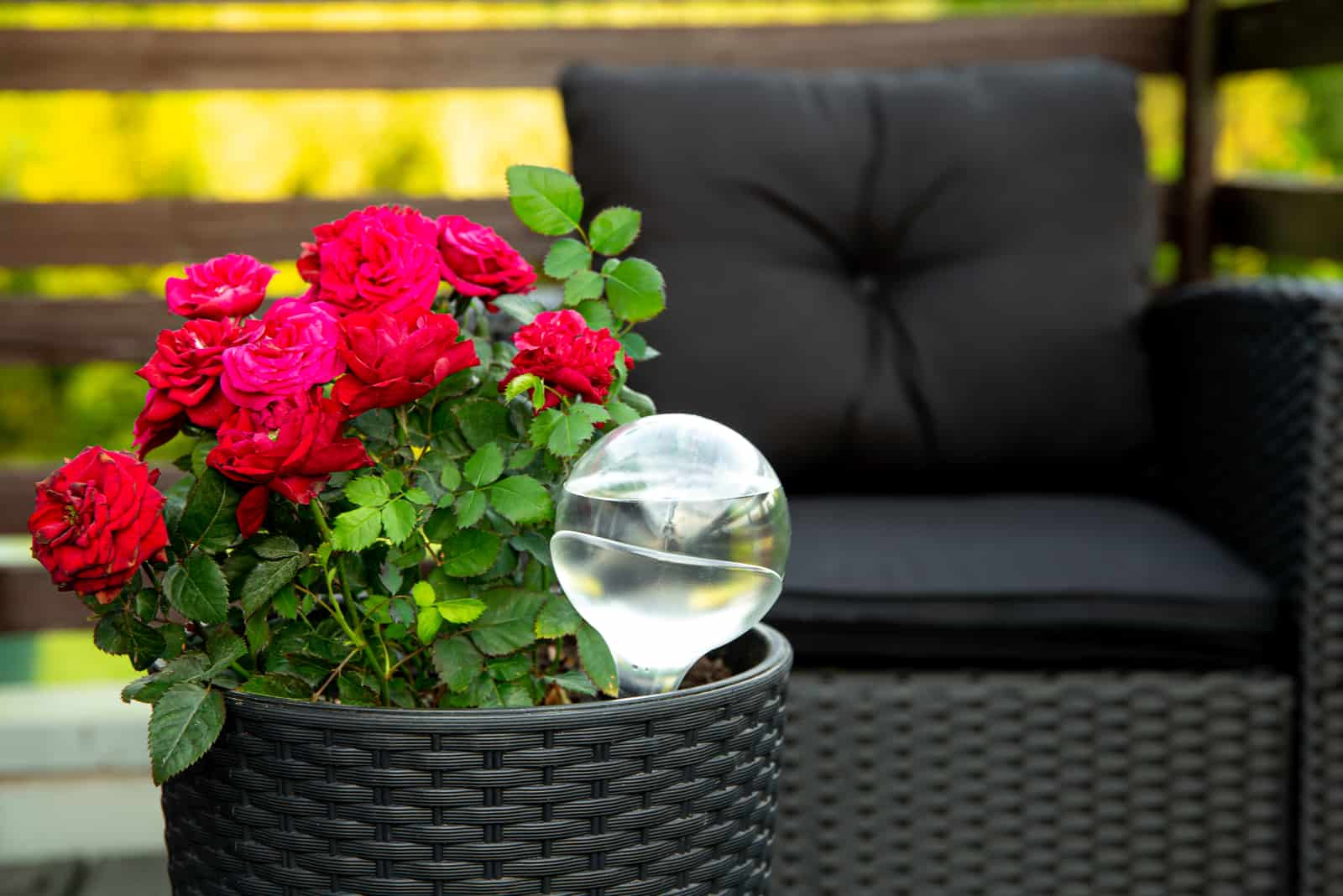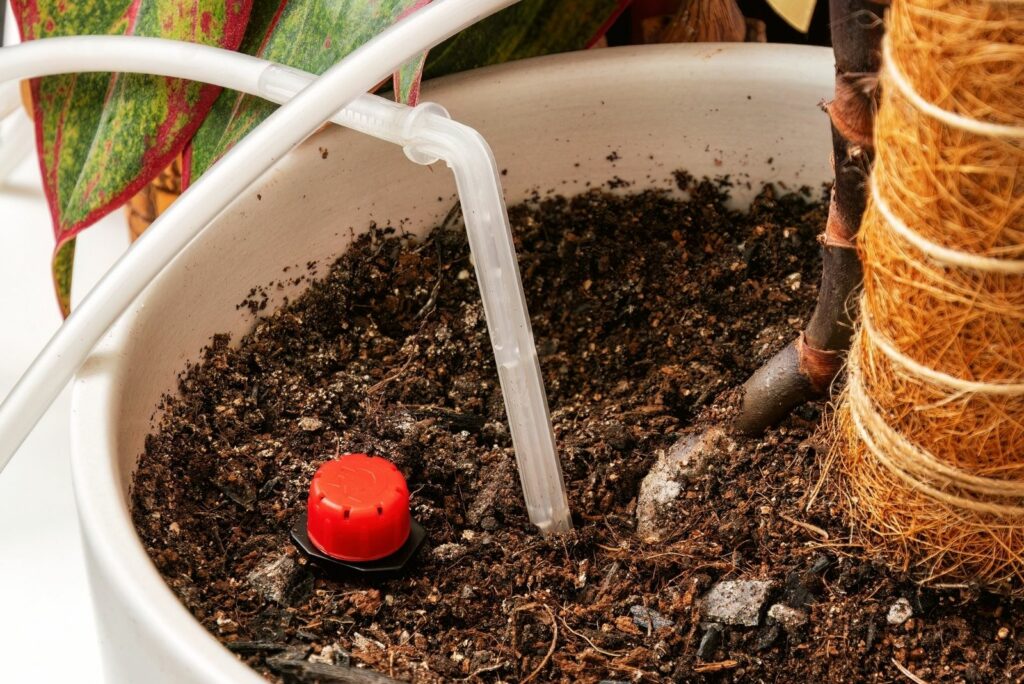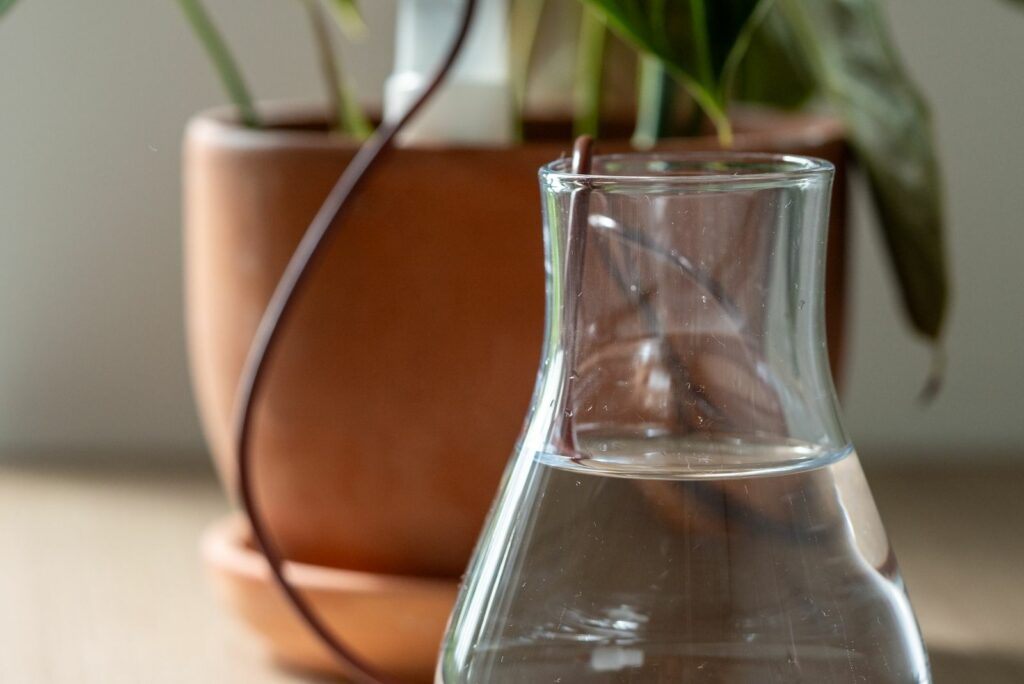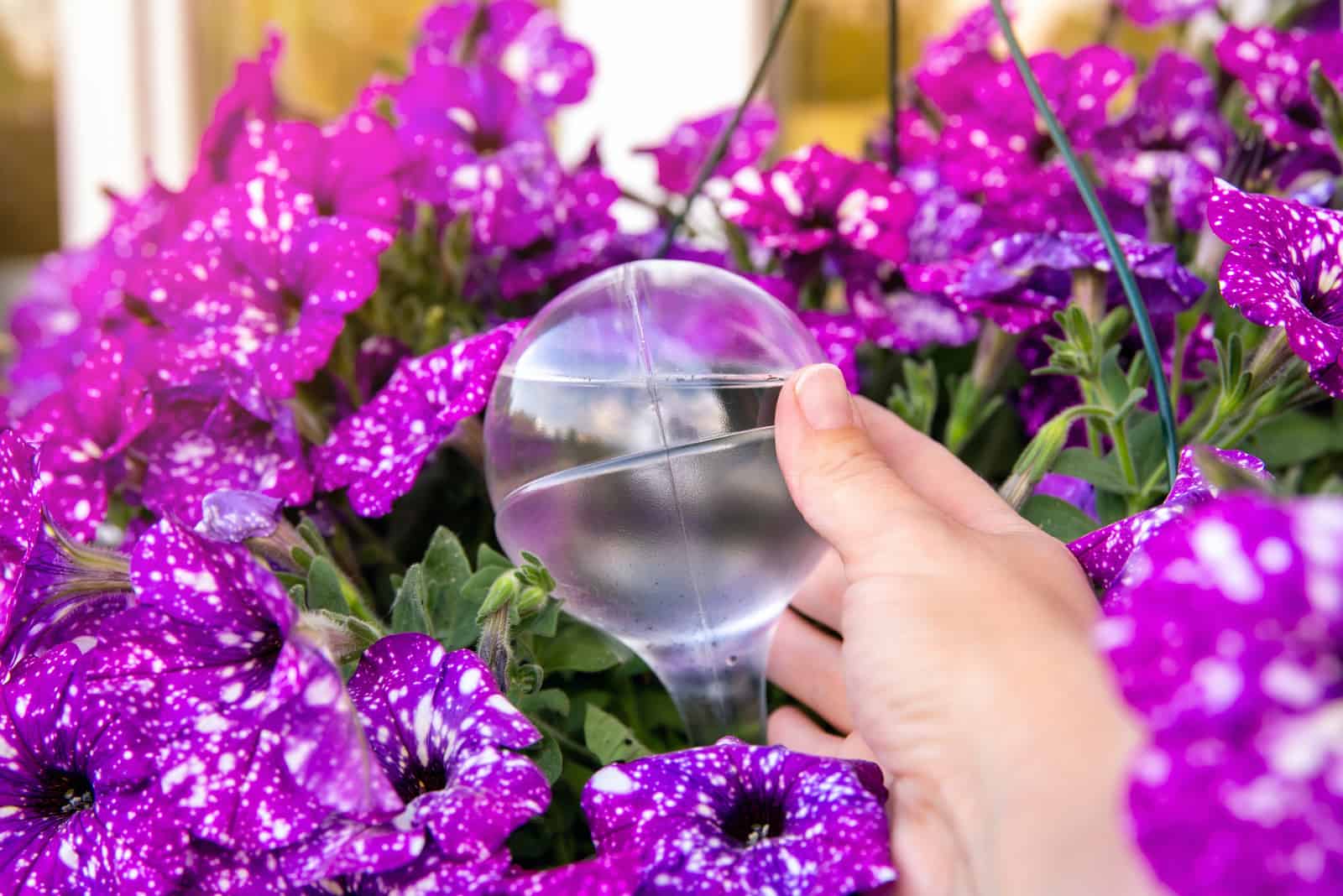If you’ve been thinking of buying some self-watering pots, maybe you should wait until after you’ve read this article.
It’s been widely reported that self-watering planters are not all they’re cracked up to be. Let’s take a look at the main reasons this invention may not be the answer to your prayers.
Read on to discover the 6 main problems with self-watering pots.
Let’s get started!
The 6 Biggest Problems With Self-Watering Pots
Self-watering pots are often said to be the best solution for people who live fast paced lives and always forget to water their pet plants (we don’t blame you, we’re just simply stating the facts).
Of course, the best self-watering pots depend on a number of factors, such as the size of your container garden and the plant type (perennials, biennials, annuals, herbs, etc.) you would like to grow.
Here is a list of the 6 top problems involving self-watering pots, which you should read before making your purchase.
Not Suitable for Every Plant
We mentioned that self-watering containers are suitable for ALMOST every plant, but not every plant is suited to these pots.
Indoor plants will definitely benefit from self-watering planters, but the same cannot be said for succulents or cacti.
Succulents and cacti-like plants are known to thrive in dry or low-moisture level soil, and growing them in self-watering pots will be impossible as these plants prefer to dry out between watering sessions.
Self-watering pots are also unsuitable for plants with long and thick roots as they are quick to proliferate and end up getting soaked in the water reservoir. Oversaturation of the roots and pores inhibits the intake of water and nutrients, which leads to root rot.
So, if you are thinking of cultivating plants with specific root systems, self-watering pots are something you should avoid.
Not to Be Kept Outdoors
Plants require oxygen to live, but they shouldn’t risk death in order to obtain it.
Keeping your plants outdoors exposes them to all sorts of weather conditions and, conversely, the risk of overwatering, underwatering, or freezing.
Although self-watering pots are often equipped with an overflow hole, they will do the plants no good if they are faced with a heavy downpour.
These pots will continue transporting moisture to the plant irrespective of humidity levels, so you will be responsible for their protection.
On the other hand, consistent soil moisture cannot be maintained if the plants are placed in direct sunlight. The potting mix will completely dry out, the water from the reservoir will evaporate, and the sub-irrigation system will inevitably fail.
In short, a self-watering pot will fail in its purpose as self-irrigation was one of the main things the designers had in mind when they came up with the product in the first place.
Low temperature is not only detrimental to a plant’s health, but also to the pot itself. Without taking necessary precautions, water in the tank will freeze and result in the compartment expanding, buckling, budging, or cracking.
Consequently, you will need to replace the self-watering pot and/or some of its parts.
Mosquito-Prone
Self-watering containers are intended for breeding plants, but they might inadvertently breed mosquitos.
Mosquitos are naturally attracted to humid and wet places, making your water reservoir an ideal breeding ground.
Unless you flush the water out every now and then, or cover the overflow and drainage holes with an insect screen, swarms of mosquitos will soon be after your blood. And we don’t mean that metaphorically!
Gnats-Prone
While self-watering pots are known for keeping weeds out of soil containers, this also means they keep gnats in.
Fungus gnats are fruit fly-like insects that lay eggs on wet or moist soil or organic debris around the plant. They are harmless to humans, but might wreak havoc on your plant as their larvae feed on plant roots and inhibit further plant growth.
Even though gnats have a short life cycle, the eggs they lay in the soil frequently go undetected. This means that the infestation can quickly overrun the plant, making it difficult to eradicate the population, especially if present in large numbers.
Causes Toxic Mineral Build-Up
Minerals that have not been absorbed by the plant dissolve in water into soluble salts. Their concentration is high as plant care implies adding water-soluble fertilizers to the potting mix to ensure better quality and provide a nutritious diet for the plants.
Due to evaporation, minerals or salts left behind gradually accumulate on the surface of the soil and become toxic. As a result, plant leaves start dropping, wilting, and changing color. If left untreated, the build-up will eventually kill your plant.
More information on preventing salt build-up can be found online, but it remains a long-term nuisance associated with self-watering containers.
Pricey
If price is a factor for you, you might want to avoid a self-watering planter.
Self-watering pots tend to be more expensive than standard pots. On Amazon, you can check the top-rated self-watering pots to determine their price range and decide whether it fits your budget.
The price will vary in accordance with the size, color, shape, capacity, and material of the pot.
Can You Overwater with Self-Watering Pots?
If you somehow overfill the water reservoir or overwater the soil, this is where the overflow hole or drainage holes come into play.
The overflow or drainage holes are drilled just above the reservoir. This way, they channel the excess water into the outer pot, preventing water overflow, overexposure to moisture, and root rot.
More advanced self-watering pots include additional parts such as a fill tube, a water level indicator, and an overflow plug. If the water is overfilling the water reservoir or soil, simply pull the plug to drain the excess water.
Benefits of Self-Watering Pots
There are always two sides to every story, so it would be unfair of us not to mention the benefits of self-watering pots. Here are the good things about self-watering pots.
Convenient and Efficient
Self-watering containers have gained popularity due to their convenience and efficiency.
If you’re away on holiday or have a busy schedule, it may be difficult to regularly water your plants. In this case, self-watering containers will ensure that your plants remain fresh and healthy by providing them with a consistent moisture level.
You can forget about setting an alarm or providing round-the-clock care as self-watering pots will do that for you. Just make sure there is enough water in the water reservoir, and your potted plants can go for a week or two without you having to water them yourself.
Water-Saving
A well watered plant is a happy plant! Even beginners know that!
If the soil is wet and the water level isn’t running too low, you might be making the beginner’s mistake of smothering your precious plants by overwatering.
Self-watering pots are suitable for almost all types of plants as the water reservoir regulates the amount of water and tailors it to the plant’s needs. And water conservation helps in saving planet Earth, which is a great added bonus!
Keep Your Plants Healthy
There is much more to growing lush houseplants than just top-down watering.
Plants don’t thrive in overly wet, soggy, or moist soil. A standard watering pot doesn’t have an overflow hole or drainage holes, so the excess water accumulates at the pot base and flushes out the minerals. In a self-watering container, the plants wick up the moisture from below rather than above, leaving the soil perfectly saturated.
Moreover, a good indicator of a plant’s health is the color and the condition of its roots.
Prevent Root Rot
Constant exposure to water will clog the plant’s pores and result in under-aired roots, which leads to root rot.
If your plant has black roots that leave a sticky or slimy mass, it’s often a sure sign that your plant is suffering from oxygen and nutrient deprivation coupled with a fungal infection. In summary, root rot.
Before you know it, your perky colorful plant will start developing brownish-yellow wilting leaves that can be blown off even by a light wind.
They will also start to droop.
Luckily, self-watering pots function as self-watering systems that facilitate healthy and robust root growth and keep the plant’s nutrients where you want them. What more could you ask for?
FAQS
How do self-watering planters work?
Functioning as a self-irrigation system, a self-watering planter typically includes a growing bed or the inner pot, potting soil, water reservoir, or outer pot, and a wick.
The growing bed and the water reservoir are made of two separate compartments, with the water poured into the water reservoir and placed underneath the growing bed.
Not every type of soil is compatible with self-watering planters, so using a lightweight soil mix would be best. The soil is commercially available, but can also be made by combining compost, perlite, organic fertilizer, or mulch.
Once the compartments are appropriately placed, they are connected via the wicking system. Capillary action or wicking is the main advantage of self-watering pots.
The wick can be made out of any absorbent and resistant material, but it is advisable to opt for a plain, dye-free cloth strap. With one end of the wick in the water reservoir and the other in the soil, the capillary action enables water to travel up the wick and stay in contact with the plant’s roots.
Evaporation prompts plants to satisfy their thirst by sucking up water from the bottom of the pot. The water reservoir provides the plant with water and necessary nutrients through wicking, making your plant healthy and happy.
How do you increase the water level in a self-watering pot?
Self-watering pots often contain a removable water compartment that allows for an easier refill. There is also a fill tube that you can use if the water compartment is non-removable.
What size is a self-watering pot available in?
Self-watering pots are available in XS, S, M,and L sizes.
Final Thoughts On Self-Watering Pots
A self-watering pot gives the impression of an ingenious, time, and labor-saving device that will act as a foster parent to your plants while you are away or busy. Under the right conditions, it will optimize your plant growth by providing adequate aeration and nutrition.
However, a self-watering pot seems to have more disadvantages than advantages. Applying remedies might alleviate the disadvantages, but calls the benefits of convenience and efficiency into question. It’s important to remember that owning a self-watering pot does not absolve you of the responsibility for your plants.
Finally, you can watch a DIY tutorial and make your own self-watering container to test it. It might not be a household name like lechuza, but at least you won’t have to worry about whether a self-watering pot purchase would give you more bang for your buck.
Until next time!
Like this post? Share or pin it for later!

